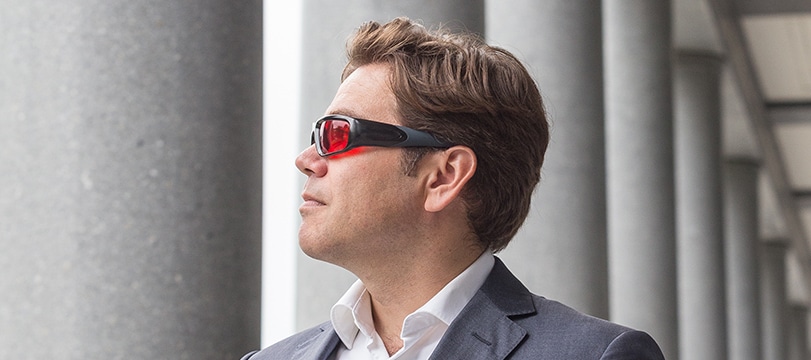
03:13 -
© Propeaq
The Dutch brand Propeaq has created glasses that use light therapy in order to help you to battle the winter blues as well as various sleep problems. Is this really possible and how do they work? Here, we explain all.
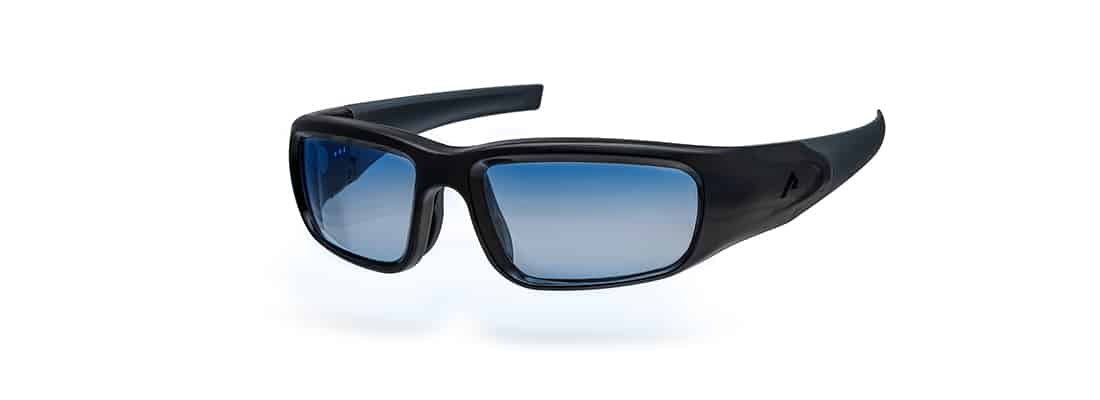
© Propeaq
From the Egyptian god Ra and the Greek god Helios to the Inca god Inti, the sun has long held in high importance by religions throughout history for its beneficial qualities. From a medical standpoint, it was also in Ancient Greece where Hippocrates lay the foundations for so-called light therapy, when he discovered that daylight had therapeutic properties, such as being able to prevent and cure certain illnesses and disorders – particularly psychological ones. It’s acceptance in contemporary medicine – also known as luminotherapy or ‘luxtherapy’ only really established itself in the early 20th century, when the Danish doctor Niels Ryberg Finsen was awarded the Nobel Prize for research into the area in 1903.
.
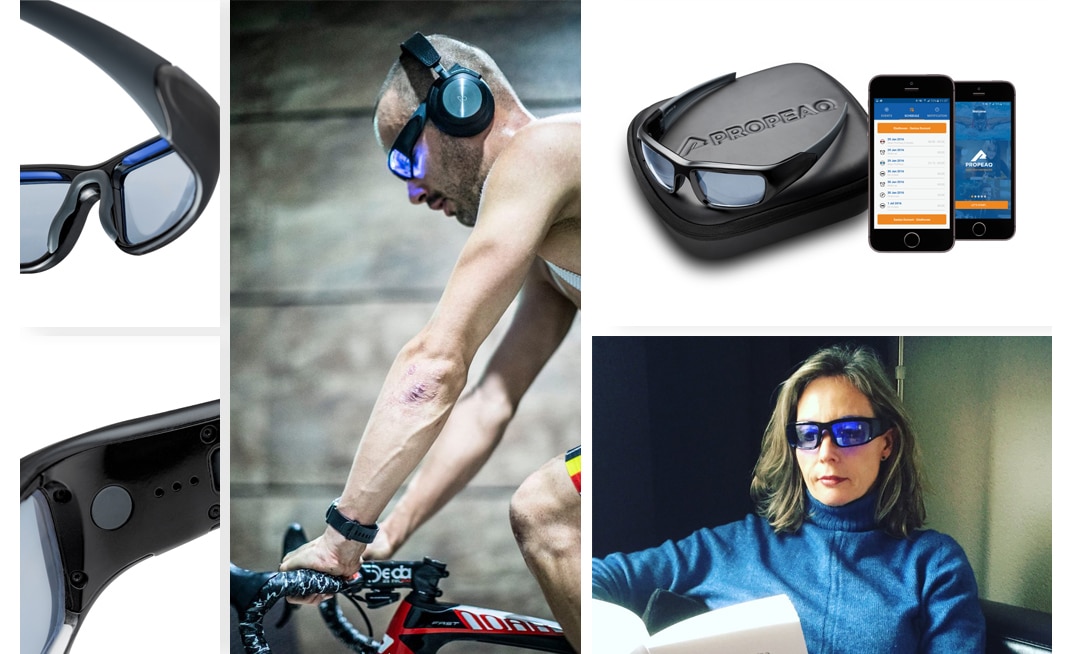
© Propeaq
His work, which focused on the treatment of tuberculosis through a concentration of rays of light, revealed the importance of light to the proper functioning of human organs. Although the scientific integrity of his findings have been called into question over time, his decisive discovery on the therapeutic effects of light and ultraviolet rays, and his conclusion will be remembered: ‘light is better for our health when it contains traces of ultraviolet – and in the proportions that we learn at school: More UVA, some UVA and no UVC. This is what the sun does: emit more UVA than UVB.’
Throughout the 20th century, more investigation was carried out on the beneficial effects of light, but it wasn’t until 1980 that this research had a truly scientific integrity. In 1984 the doctor Norman E. Rosenthal and his American colleagues at the National Institute of Mental Health used luminotherapy to treat Seasonal Affective Disorder (SAD). Despite the effectivity of the treatment that their experiments showed, it took 20 years for the wider scientific community to officially acknowledge luminotherapy as a treatment against seasonal depression and certain sleep disorders.
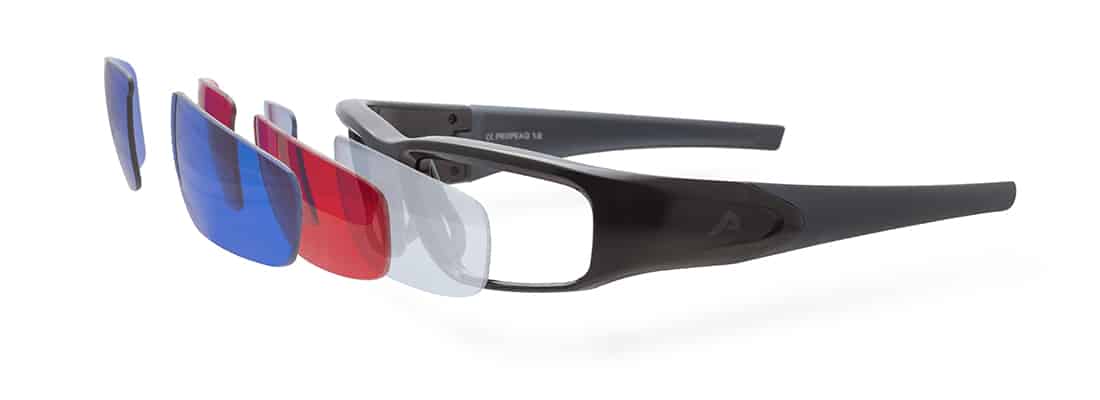
© Propeaq
The way luminotherapy works is by regulating the secretion of the sleep hormone melatonin, in order to rebalance the rhythm of our internal sleep cycle. This cycle is known as our circadian rhythm, and is based on a 24 hour cycle over which several of our biological and physiological functions repeat. The way we are exposed to natural light is through the retinas, and so our eyes are the most important part of our body when it comes to establishing this sleep cycle or rhythm. Our eyes send a signal sent by the light towards our brains which then secretes hormones and controls how our body functions.
SAD (Seasonal Affective Disorder) – the famous ‘winter blues’ which result from the lower levels of sunlight during the winter months – affect as many as one in 10 people. The cause of SAD is an imbalance in our metabolism resulting from an overproduction of serotonin during the day and leads to more acute feelings of fatigue, irritability and hunger. The role of luminotherapy in these circumstances is to resynchronise our biological rhythm by reducing melatonin production and increasing levels of serotonin, the effect of which is anti-depressive appetite and fatigue-regulating.
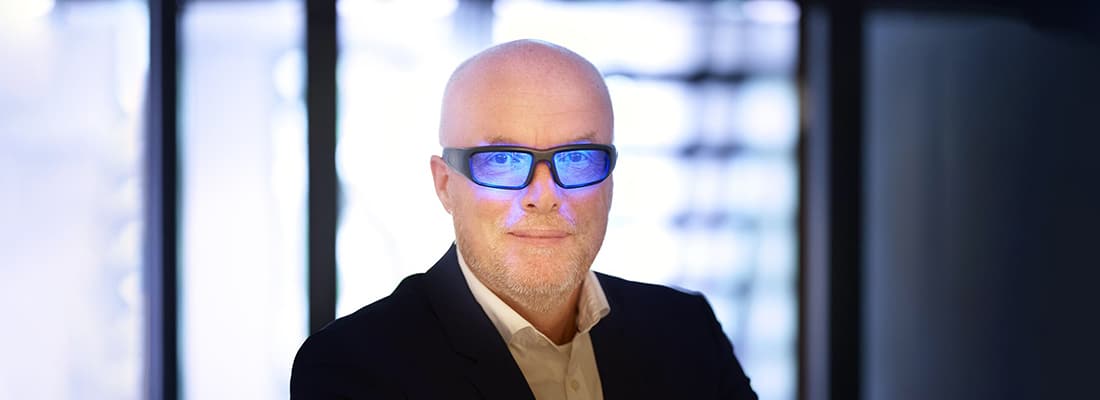
© Toine Schoutens, CEO Propeaq
A Dutch company based in Tilburg, since its creation Propeaq has specialized in using light therapy in glasses. Unlike traditional luminotherapy lamps, their glasses have several advantages. They are lightweight (41 grams), and so are easy to carry about wherever you go. They also come with a charger, travel adaptors and a handy travel case, allowing you to carry on with business-as-usual, but all the while being able to slot in a spot of light therapy, without having to carry around a large lamp with you! As the founder of Propeaq, Toine Schoutens also points out: “sitting in front of a lamp is not an efficient use of our precious time!”
From a technical point of view, at the front of their frame the glasses are equipped with two electroluminescent diodes (commonly referred to as LEDs). They block out blue ultraviolet light and only process light with wavelengths strictly defined between 460 to 480 nanometres, so as not to damage the cornea or the skin. On the left hand side of the glasses there is a battery which can be recharged via a USB socket, and which lasts for up to 2 hours (which equates to 4 days of use, since the daily recommended use of the glasses is half an hour). They come with three different coloured frames (light blue, dark blue and red), and by connecting them to Bluetooth, can be used through an Android or iOS-specific application which allows the user to personalise their specific needs and explore and adjust the glasses various settings and functions.
Whatever colour the lenses used, the principal is the same: by decreasing or increasing the rate of melatonin, the glasses enable us to reprogram our biological clock and can improve our lifestyle and solve many different light-caused problems or conditions we may face, whether it’s winter blues or jet lag, to counteract the stimulating blue light from our computer and phone screens that we look at before bed, insomnia, to improve concentration or even to make getting up in the morning easier. Propeaq have even collaborated with several athletes to help them improve their performance and specific problems through light therapy. The company also works with several establishments, particularly hospitals: places constantly disturbed by nocturnal activity and light, and where the body clock of patients is easily put off kilter. Available on Amazon and Propeaq’s website, these glasses are now available from €175.